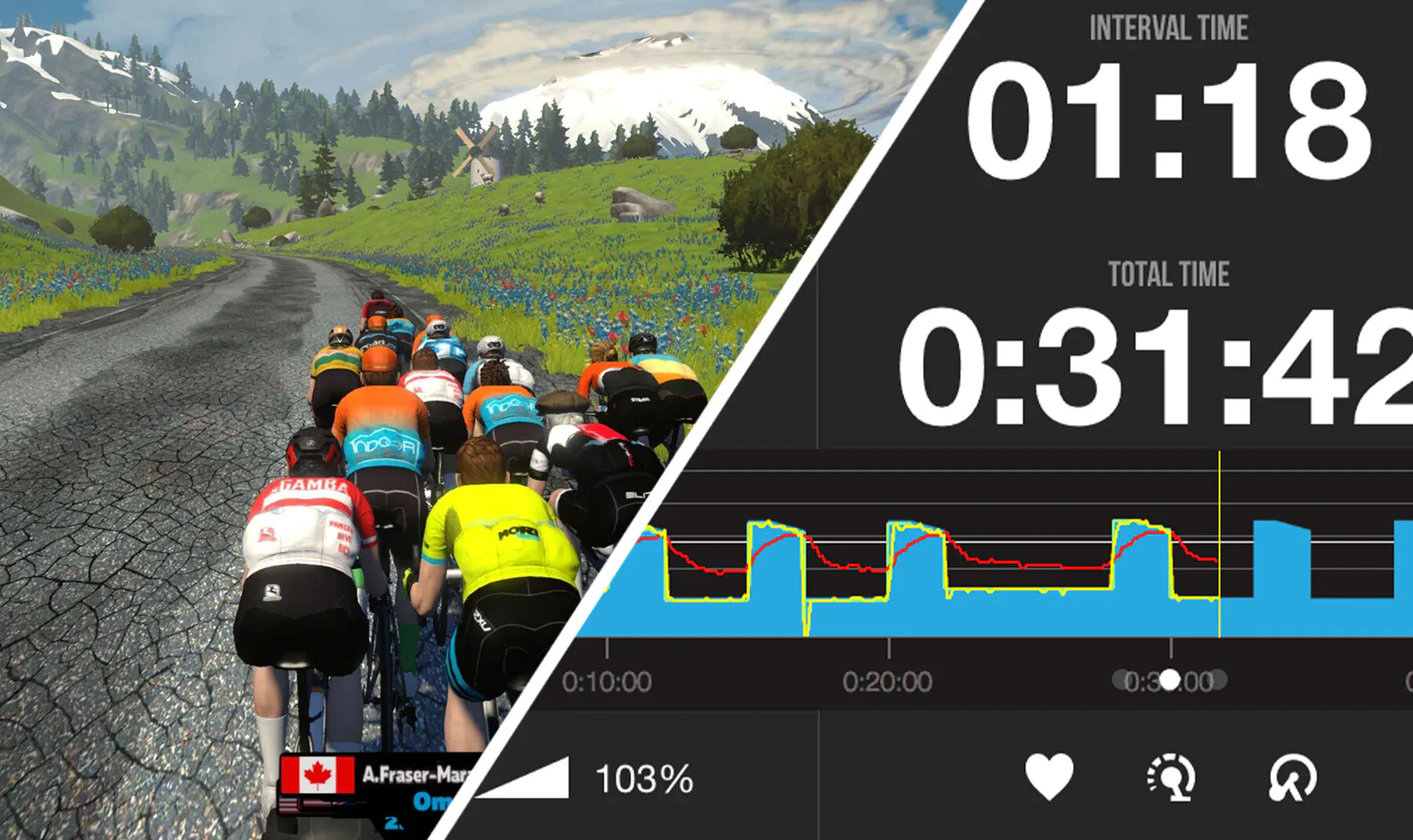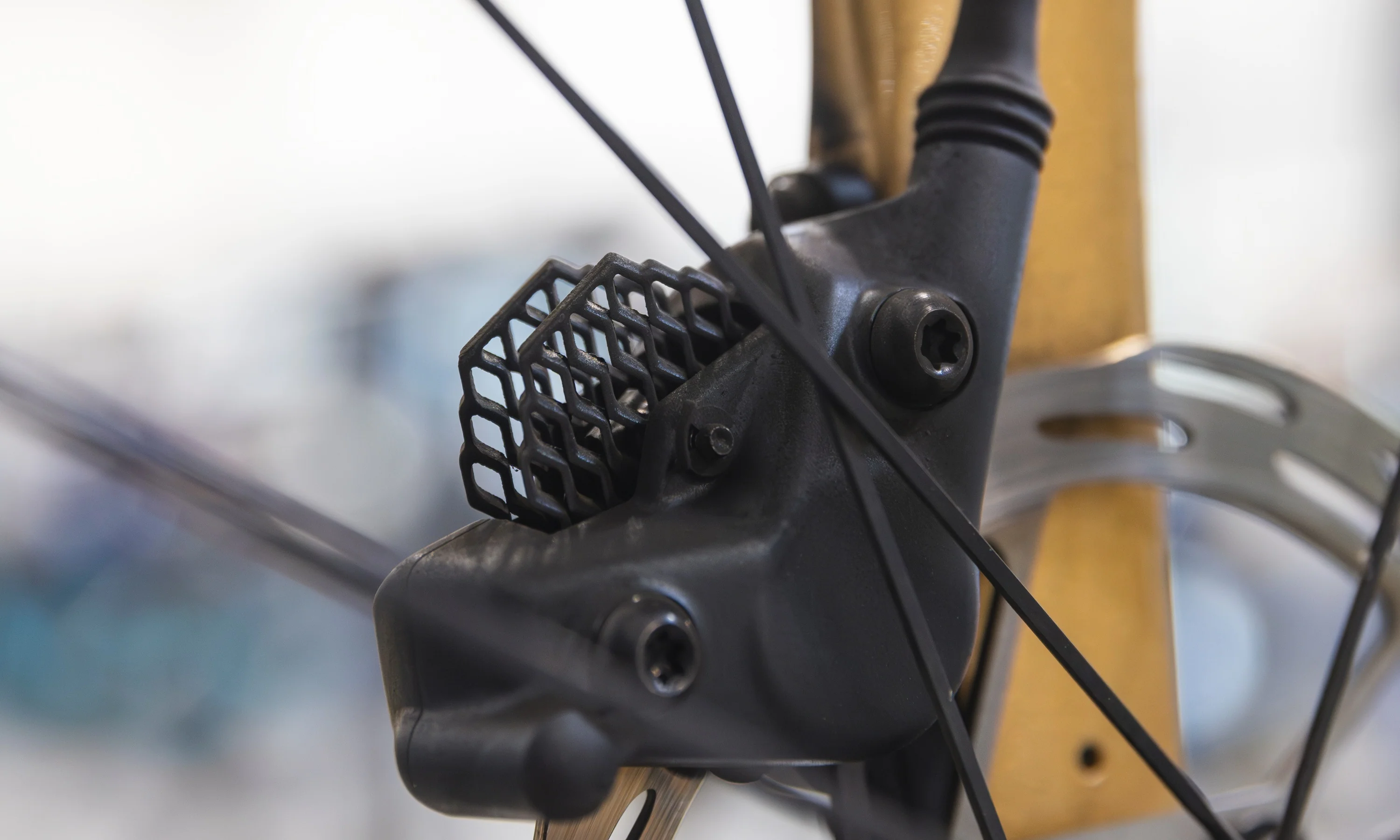Garmin has unveiled its next-gen Forerunner 965 and 265/265S watches, and the big news is that they now come equipped with stunning AMOLED touchscreen displays. This means the new Forerunner is now the perfect option for athletes who also want a practical and modern lifestyle watch but don’t want to give up Garmin’s sport-focused tools and features for running, cycling, or swimming. Let’s dive in and find out what’s new with the Forerunner 965 and 265/265S.
[button]SHOP GARMIN[/button] | [button]SHOP BIKES[/button]
Garmin Forerunner 965 Highlights

- Brilliant 1.4” AMOLED touchscreen display
- 47mm case
- Traditional button controls
- Lightweight titanium bezel
- Built-in mapping/navigation
- Training & performance tools for running, cycling, and swimming
- Multi-band GNSS with SatIQ™ technology for superior positioning accuracy
- Downloadable music through Spotify, Amazon Music, or Deezer
- Garmin Pay™ for contactless payments
- 32g memory capacity
- Battery life: up to 23 days in smartwatch mode, up to 31 hours in GPS mode
- USB-C charging
- Weight: 53g
- $599.99
Note: The Forerunner 965 is arriving late March.
Garmin Forerunner 265 & 265S Highlights

- Brilliant 1.3” AMOLED touchscreen display
- 46mm (265) / 42mm (265S) case
- Traditional button controls
- Training & performance tools for running, cycling, and swimming
- Multi-band GNSS with SatIQ™ technology for superior positioning accuracy
- Downloadable music through Spotify, Amazon Music, or Deezer
- Garmin Pay™ for contactless payments
- 8g memory capacity
- 265 Battery life: up to 13 days in smartwatch mode, up to 20 hours in GPS mode
- 265S Battery Life: up to 15 days in smartwatch mode, up to 24 hours in GPS mode24 hours of battery life in GPS mode and up to 15 days in smartwatch mode
- USB-C charging
- Weight: 39g
- $449.99
[product-block handle="forerunner®-265"/]
Garmin Forerunner 965, 265, and 265S Details
 Forerunner 965 color options.
Forerunner 965 color options.
If you’re familiar with Garmin’s Forerunner multisport watches. then you’ll already know about all of the training tools and performance features these watches provide for running, cycling, swimming, and many other sports. Most athletes will primarily be using GPS and heart rate data to track their activities and workouts. If you’re not familiar, here are some of the many training tools these watches provide:
- A morning report that provides an overview of last night’s sleep and the day’s training outlook, alongside HRV (heart rate variability) status and weather (when paired with a smartphone).
- A race widget that provides training tips and completion time predictions for an upcoming race based on course details, weather, and performance.
- Daily suggested workouts that adapt after every run to match performance and recovery while also accounting for upcoming races added to the Garmin Connect™ calendar.
- Training readiness scores help athletes determine whether it’s a good day to go hard or to take it easy based on sleep quality, recovery, training load, and more.
- Heart rate variability tracking while sleeping to track your recovery and overall wellness.
- Measure running power and running dynamics such as cadence, stride length, ground contact time, and more.
This provides a small picture of what these watches are capable of. The top-of-the-line Forerunner 965 takes things a step further by logging additional performance metrics like load ratio (the relationship between an athlete’s training load and what they can handle), real-time stamina info to manage exertion levels, and detailed climbing metrics (including gradient, distance and elevation gains).
New Garmin Forerunner AMOLED Displays
 Forerunner 265 color options.
Forerunner 265 color options.
The training and performance features were already available on the previous generation of Forerunner watches, so the big change with the latest generation is the addition of the AMOLED (active-matrix organic light-emitting diode) display. These colorful, high-resolution displays are the type found on many modern smartphones and smartwatches. Garmin has used AMOLED displays on its Epix and Venu 2 watches, but the Forerunner 965 and 265/265S are its first dedicated running/multisport watches to use the technology. This makes them compare favorably with lifestyle watch offerings from the likes of Apple and Suunto, while catering specifically to athletes.
So what’s so great about an AMOLED screen? The exceptional resolution, color, and brightness make the screen much easier to see. This is especially noticeable when held next to an older Forerunner screen. The screen is easier to read and more useable while running, cycling, or open-water swimming. It also significantly enhances the usability of the touchscreen. In the case of the Forerunner 965, this is especially important for mapping and navigation. It’s easier to drag the map around and manipulate it with your finger, exactly like you would on a smartphone. Finally, it just looks pretty. The AMOLED screen handles motion graphics extremely well and greatly improves data presentation and how easy it is to navigate through the watch’s features.
 Forerunner 265S color options.
Forerunner 265S color options.
One of the biggest advantages of Garmin’s AMOLED watches, however, is the long battery life. Garmin’s watch batteries last significantly longer (weeks rather than days) than it competitors, making them easier to live with and more practical for daily wear. Of course, battery life is subject to use. Switching the AMOLED screen from “lift-to-wake” to “always on,” playing music, or using GPS will obviously use more battery. When it does need recharging, the next-gen Forerunner watches have switched to USB-C charging, something I’m personally excited for now that all my devices can soon use the same charging cables.
[newsletter]
How To Choose: Garmin Forerunner 965 vs. Forerunner 265/265S
 There are a few main reasons to choose the more expensive Forerunner 965 over the Forerunner 265:
There are a few main reasons to choose the more expensive Forerunner 965 over the Forerunner 265:
- A larger screen
- Longest battery life
- Built-in mapping and navigation
- Bigger 32g storage capacity for music
- Additional performance tools - load ratio, real-time stamina info, and climbing metrics
The Forerunner 965 is for athletes who want the best-of-the-best. Otherwise the Forerunner 265 or the smaller 265S will be more than enough for many. Both Forerunner watches are ideal for runners, cyclists, and triathletes looking to track their training, performance, and recovery, and anyone who wants to improve as an athlete. From experience, I know that both these watches have more features and tools than the average athletes will actually use. But for anyone data-oriented and/or self-coached, it will be the ultimate training partner to dial in you training and reach your performance goals. With the long-lasting battery and the addition of the AMOLED touchscreen display, they're also watches that you can wear and use all-day, every day.
[product-block handle="forerunner®-265"/]
[button]SHOP GARMIN[/button] | [button]SHOP BIKES[/button]
Photos courtesy of Garmin.

























